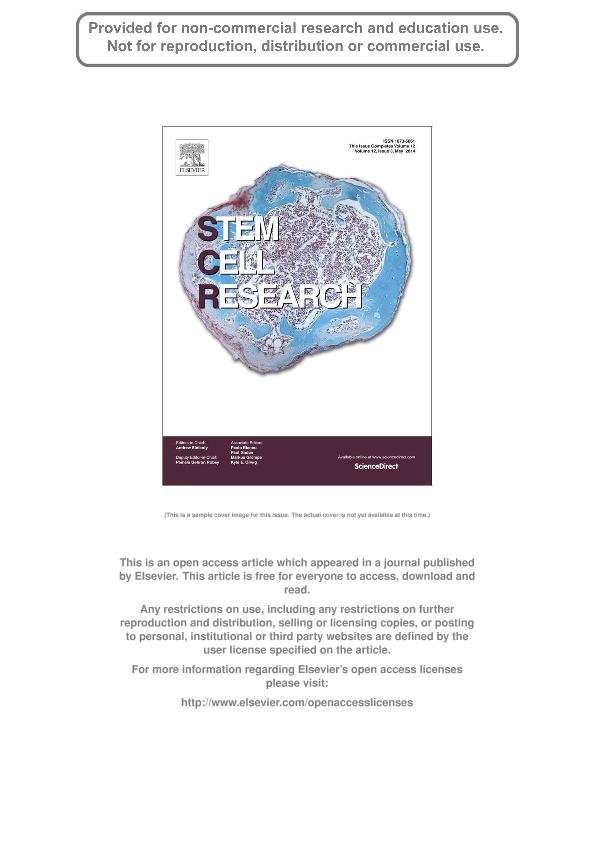Artículo
ATF3 is a novel nuclear marker for migrating ependymal stem cells in the rat spinal cord
Fecha de publicación:
03/2014
Editorial:
Elsevier
Revista:
Stem Cell Research
ISSN:
1873-5061
Idioma:
Inglés
Tipo de recurso:
Artículo publicado
Clasificación temática:
Resumen
The present study identified ATF3 as a novel dynamic marker for ependymal stem/progenitor cells (nestin, vimentin and SOX2 positive) around the central canal of the neonatal or adult rat spinal cord. While quiescent ependymal cells showed cytoplasmic ATF3 expression, during 6?24 h in vitro these cells mobilized and acquired intense nuclear ATF3 staining. Their migratory pattern followed a centrifugal pathway toward the dorsal and ventral funiculi, reminiscent of the rostral migratory stream of the brain subventricular stem cells. Thus, the chain cell formation was, by analogy, termed funicular migratory stream (FMS). The FMS process preceded the strong proliferation of ependymal cells occurring only after 24 h in vitro. Pharmacological inhibition of MAPK-p38 and JNK/c-Jun (upstream effectors of ATF3 activation) prevented the FMS mobilization of ATF3 nuclear-positive cells. Excitotoxicity or ischemia-like conditions, reported to evoke neuronal and glial injury, did not further enhance migration of ependymal cells at 24 h, suggesting that, at this early stage of damage, the FMS phenomenon had peaked and that more extensive repair processes are delayed beyond this time point. ATF3 is, therefore, useful to identify activation and migration of endogenous stem cells of the rat spinal cord in vitro.
Palabras clave:
Atf3
,
Ependymal Stem Cells
,
Spinal Cord
Archivos asociados
Licencia
Identificadores
Colecciones
Articulos(SEDE CENTRAL)
Articulos de SEDE CENTRAL
Articulos de SEDE CENTRAL
Citación
Bianchetti, Elena; Dekanic, Ana; Mazzone, Graciela Luján; Nistri, Andrea; Mladinic, Miranda; ATF3 is a novel nuclear marker for migrating ependymal stem cells in the rat spinal cord; Elsevier; Stem Cell Research; 13; 3; 3-2014; 815-827
Compartir
Altmétricas




